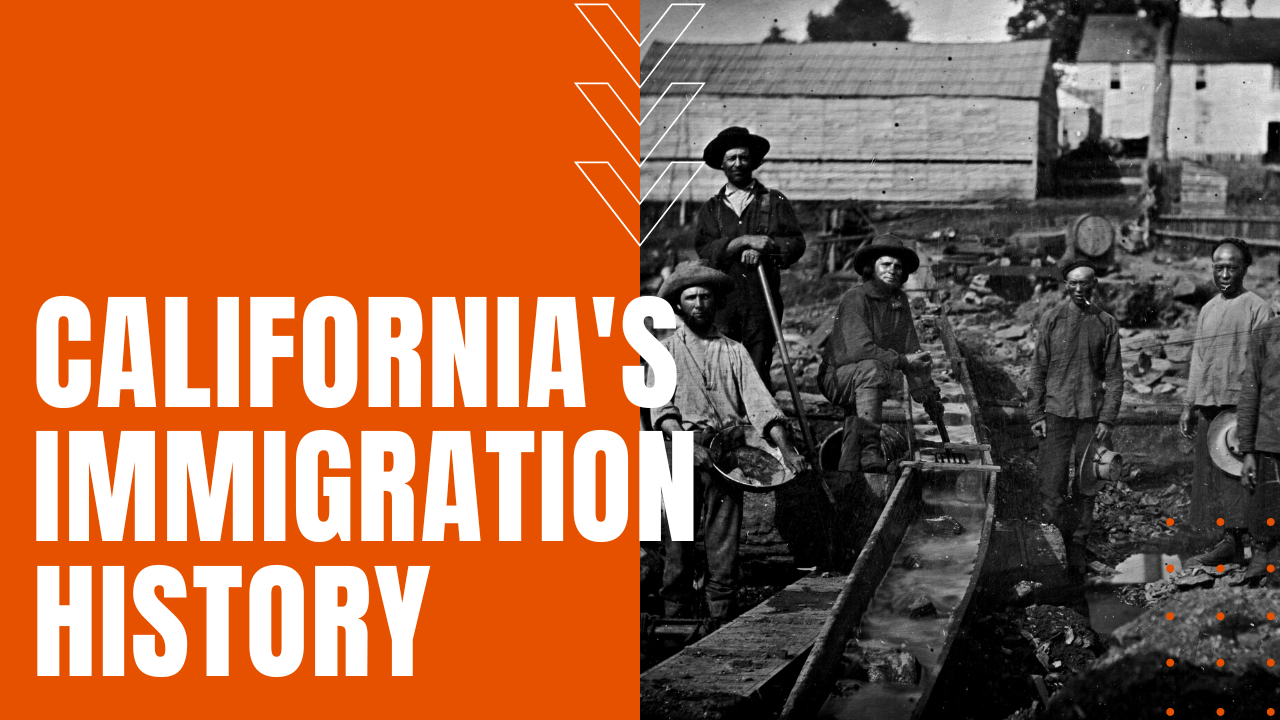California’s Immigration History

Named California by Spanish soldiers and missionaries, after California was handed to the United States from Mexico on February 2nd, 1848—ending the two-year Mexican American War—the discovery of gold at Sutter’s Mill that same year set off the first wave of American and foreign immigration into the Golden State, increasing the non-indigenous population to 92,587, as recorded in the U.S. census of 1850.
Immigration explodes by 1870
New Yorkers and immigrants from other northeastern states led the wave of new arrivals into the state, followed by immigrants from Mexico, Ireland and Germany, increasing the statewide population to 560,000 by 1870. Other boom-inspired migrations would follow, including a real estate boom in the 1880s, oil in the 1890s and orange and fig farming by the turn of the century.
Largest Migration Wave in U.S. History
Yet the largest internal immigration wave in American history occurred in 1920s Southern California, when land speculators advertised the region as an new Eden on earth, replete with warm breezes and endless sunshine, topped off by a seemingly endless Pacific Ocean coastline. During the Roaring Twenties, two million people moved to Southern California, while Los Angeles alone gained 1,272,000 new citizens. Silent movies in the 1920s sparked the rise of Hollywood glamour, while a further real estate boom increased suburban populations in the 1930s.
Plentiful Jobs
An abundance of jobs fueled California’s growth during the war years of the 1940s, while the Cold War Space Race of the 1960s witnessed the steady influx of engineers and scientists into the state. That same decade, the hippie counter-culture movement sparked a different sort of migration into the San Francisco Bay Area, culminating in the Summer of Love in 1967.
Melting Pot California
Today, an estimated 39 million Americans call California their home, making the Golden State the most populated state in the nation, while 27% or 10,564,000 Californians were born outside of the United States. In 2022, California’s gross state product clocked in at a whopping $3.63 trillion, making it the largest sub-national economy in the world. Hypothetically, if California were its own sovereign nation, the state’s economy would make her the fifth largest in the world, making California’s immigration history a cross-sectional example of America’s melting pot spirit.
